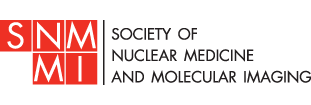Journal SAM: Oncologic PET/MRI - Part II: Bone Tumors, Soft Tissue Tumors, Melanoma, and Lymphoma
Release Date: 12/3/2012
Expiration Date: 12/3/2015
Continuing Education Credit Information
ABNM SAM Credit
The
American Board of Nuclear Medicine has reviewed and approved this
Journal SAM activity submitted by the SNMMI. This activity fulfills the
requirements of the ABNM Maintenance of Certification program for
self-assessment. 2.0 SAMs have been awarded for this activity.
AMA-PRA (Physician)
The
Society for Nuclear Medicine and Medical Imaging, Inc. (SNMMI) is
accredited by the Accreditation Council for Continuing Medical Education
(ACCME) to provide continuing medical education for physicians.
SNMMI designates this enduring material for a maximum of 2.0 AMA PRA Category 1 CreditsTM. Physicians should claim only credit commensurate with the extent of their participation in the activity.
Objectives
On successful completion of this activity, participants should be able to describe:
1. The advantages and disadvantages of PET/MRI in oncologic applications in comparison to conventional imaging methods and PET/CT.
2. The limitations of PET/MRI compared with invasive staging procedures (biopsy).
3. The metabolic?anatomic imaging procedure of choice (PET/MRI vs. PET/CT) based on tumor entity and location.
Target Audience
The
LLSAP is designed for all nuclear medicine specialists and other
physicians, pharmacists and technologists who practice diagnostic
and/or therapeutic nuclear medicine.
Christian Buchbender, Till A. Heusner, Thomas C. Lauenstein, Andreas Bockisch, and Gerald Antoch
In
accordance with ACCME Revised Standards for Commercial Support and SNM
Conflict-of-Interest Policy, the authors have indicated no relevant
relationships that could be perceived as a real or apparent conflict of
interest. Disclosure of a relationship is not intended to suggest or to
condone bias but is made to provide participants with information that
might be of potential importance to their evaluation of the activity.

